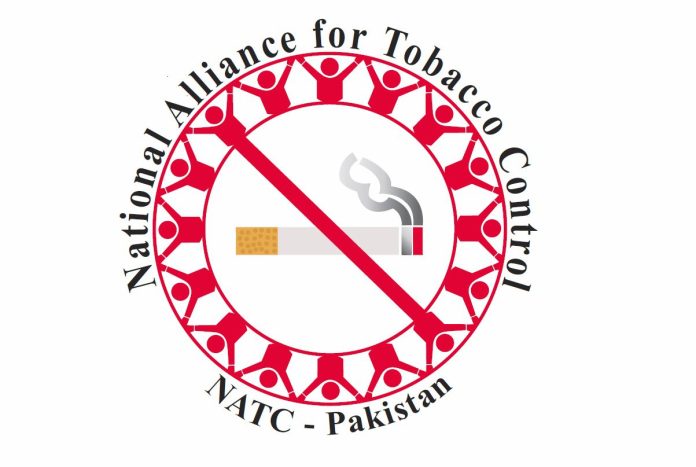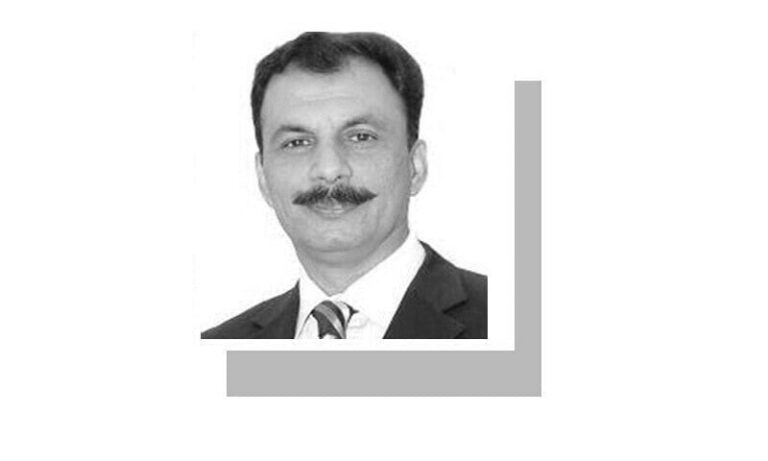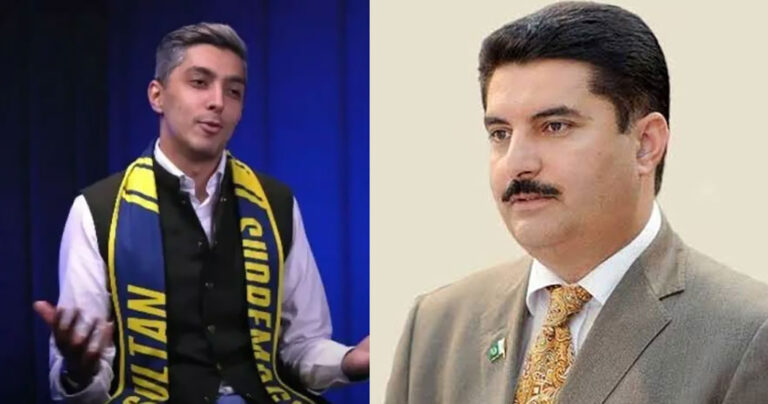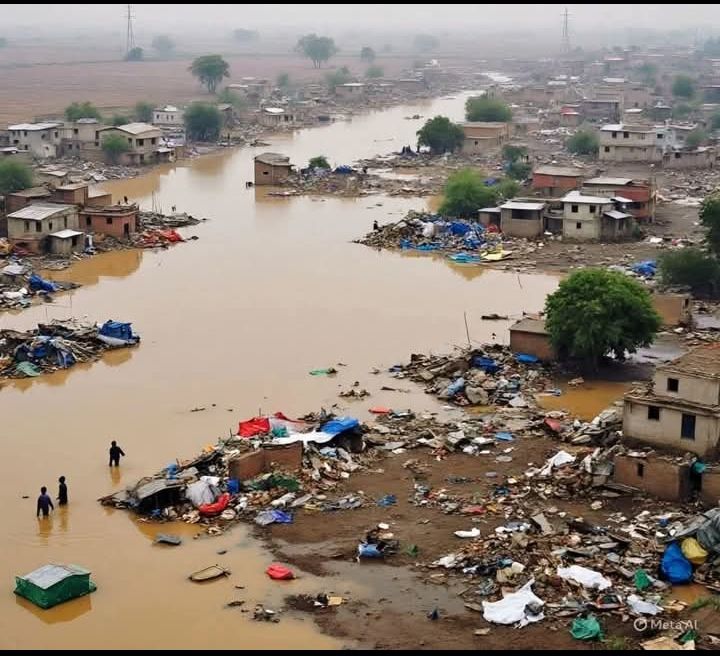
By Ijaz Ahmad
BUNER: Flood victim, Asim Buneri stood ankle-deep in muddy water, clutching a broken hoe looking for help. The 64-year-old farmer from Pir Baba, Buner, was not looking for gold but was digging through debris in a desperate attempt to find something that once resembled his home.
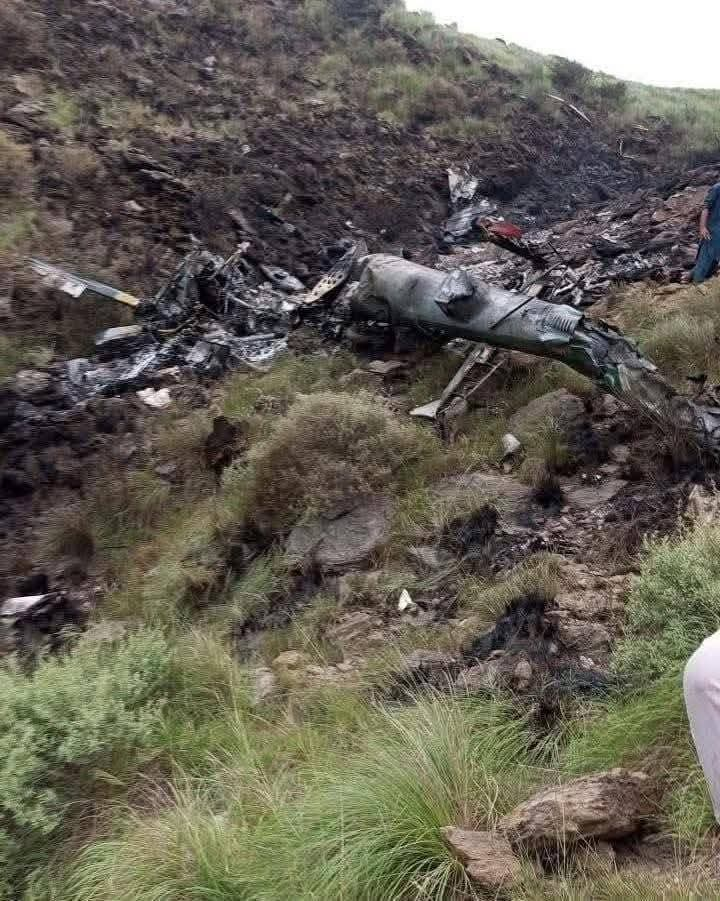
“I lost everything. The dowry I spent years preparing for my daughter’s wedding… gone,” he whispered, tears tracing the creases of his sunburnt face. “Our house, furniture, jewelry all—swept away in minutes.” Asim’s story is just one among thousands unfolding in the aftermath of the worst monsoon disaster Khyber Pakhtunkhwa (KP) has seen in recent years.
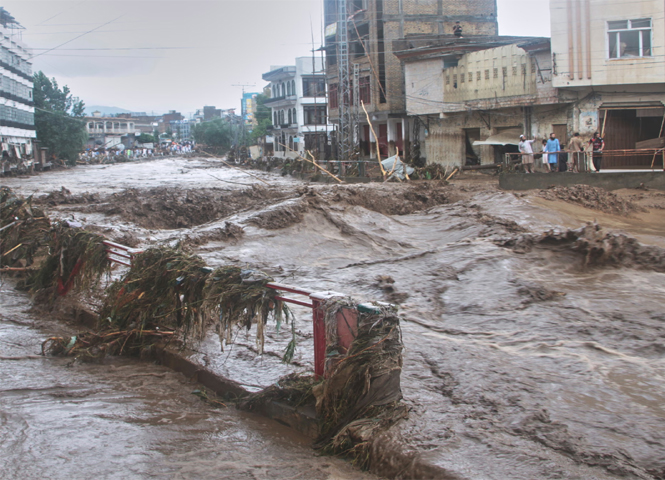
In just 36 hours, over 300 lives were lost, entire villages flattened, and communication lines cut, as a deadly cocktail of cloudbursts, flash floods, and landslides descended upon the northern region of Khyber Pakhtunkhwa. The worst hit Buner alone recorded 184 deaths, making it the epicenter of the climate catastrophe. Elsewhere, in Swat, Bajaur, Mansehra, and Battagram, families remain stranded, awaiting news of missing loved ones or digging through the wreckage of their lives. “This was not an ordinary monsoon. It was a climate catastrophe. This year, the monsoon didn’t taper but it intensified,” said Tauheedul Haq, former conservator at KP’s Forest Department. Citing a report from the World Weather Attribution, he added, “Climate change has amplified monsoon rainfall in northern Pakistan by 22%. What we’re seeing now are not seasonal showers rather they’re supercharged storms.” KP’s mountainous terrain, once revered for its beauty, has become dangerously climate change vulnerable. Glacial lake outburst floods (GLOFs) are on the rise, rivers are bursting their banks more often, and the soil battered by deforestation and relentless rain has little left to hold it in place.
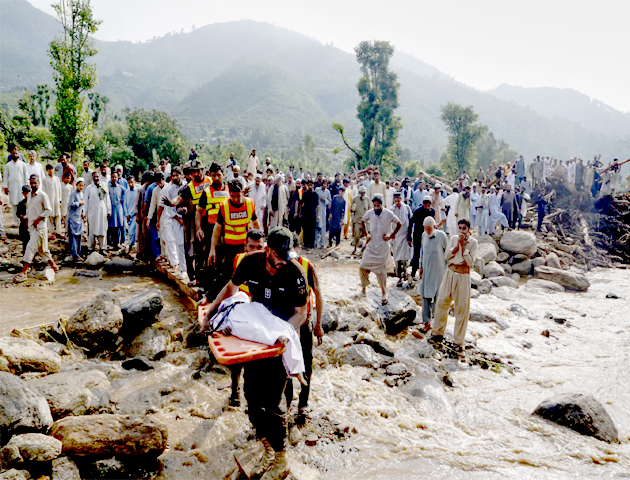
The stagnant water and contaminated supplies are breeding grounds for waterborne illnesses such as typhoid, cholera, and malaria. In already underserved areas, reports of drug-resistant typhoid are emerging. The KP Health Vulnerability ssessment 2024 estimates 18 million people in flood-prone zones are now at risk. Relief camps, some hastily erected near washed-out roads, are overcrowded and under-resourced.
“Our medical teams are stretched thin,” said Ihtisham Ali, KP’s Health Adviser, who arrived in Buner with supplies and staff. “We will cope this worst situation with unity.” With machinery unable to reach remote regions due to damage to roads inforstructure, Rescue 1122 workers have resorted to traveling on foot, carrying injured survivors across broken bridges and collapsed roads.
PDMA spokesman told this news agency that 307 people have been died including 279 men, 15 women and 13 children besides 23 houses damaged. “We’ve deployed around 25,000 rescue personnel,” said Rescue 1122 spokesman Bilal Ahmed Faizi. “But many people won’t leave. They’re still searching for family members or clinging to the remnants of what they once had.”
In Barikot, Abdul Samad, a fruit grower, surveyed his flattened peach orchard. “This land was my livelihood. Now, it’s just mud,” he said. Agricultural losses have been severe, pushing many families to the brink of food insecurity.
The KP government has declared Swat, Buner, Bajaur, and Battagram as disaster-hit zones. Rs500 million in emergency relief has been released, with Rs15 million allocated to Buner alone.
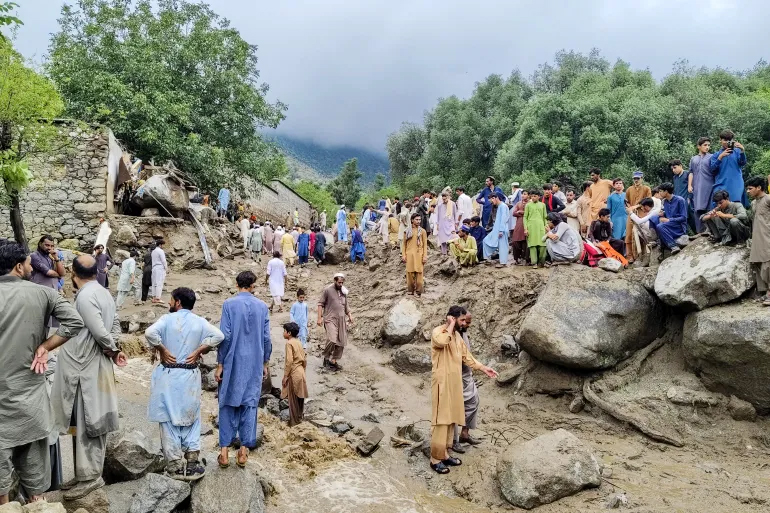
The army, under orders from Field Marshal Syed Asim Munir, has contributed over 600 tonnes of food and is actively involved in rebuilding efforts, including temporary bridges and shelters.
“This isn’t just about recovery from floods,” said Professor Dr. Nafees Khan, environmental scientist at the University of Peshawar. “It’s about preparing for a future where these disasters aren’t the exception but they’re the norm.” KP’s breathtaking landscapes now bear the scars of climate change. What were once tourist havens are now evacuation zones. A government relief helicopter crash, killing five personnel due to poor weather, is yet another painful reminder of the dangers facing both victims and rescuers. And as search efforts continue in the rubble of homes, markets, and schools, one question echoes across the mountains that how many more must die before we act?
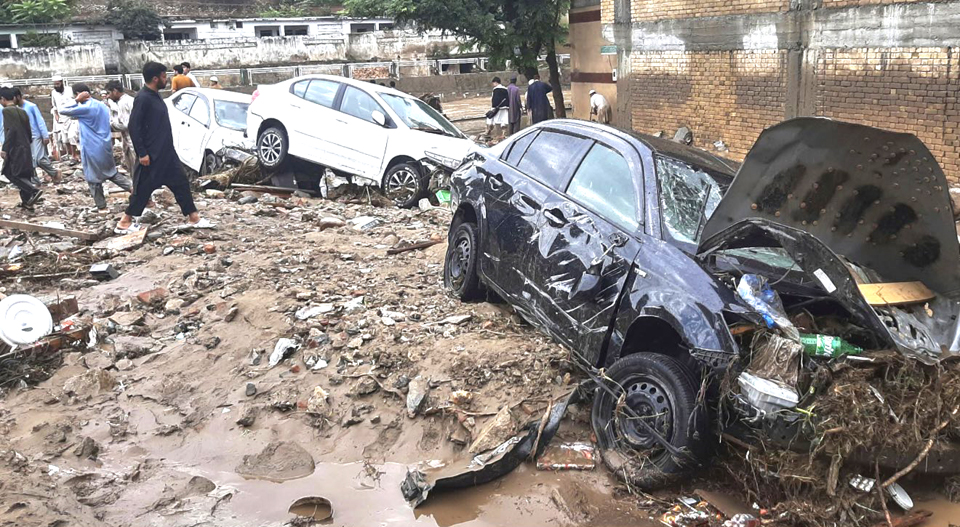
For survivors like Asim Buneri, hope is a fragile thing held together by community, resilience, and a deep yearning for help that arrives before the next storm does. “We built this house with our own hands. Now, there’s nothing left,” he said, voice trembling. “Only God knows how we will begin again.”
Edited By Summayah Ahmad
Reporter/Editor
www:sportslinehd.com
